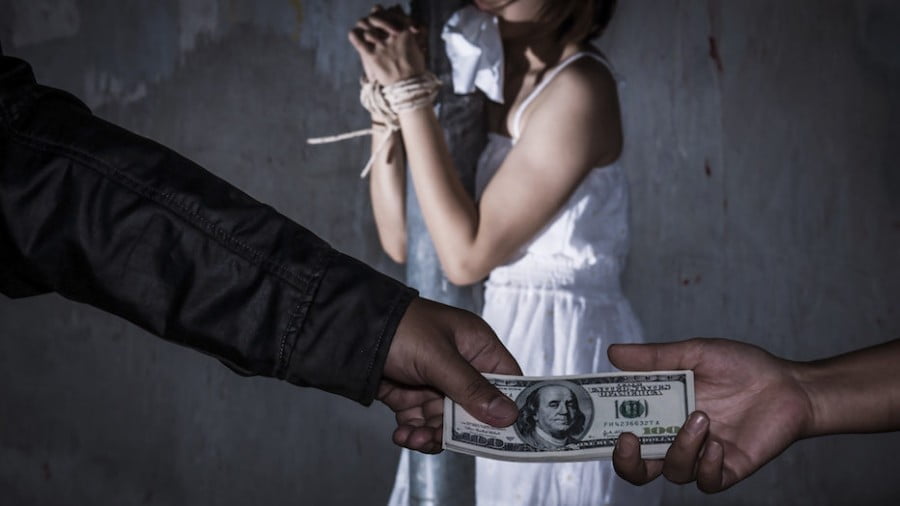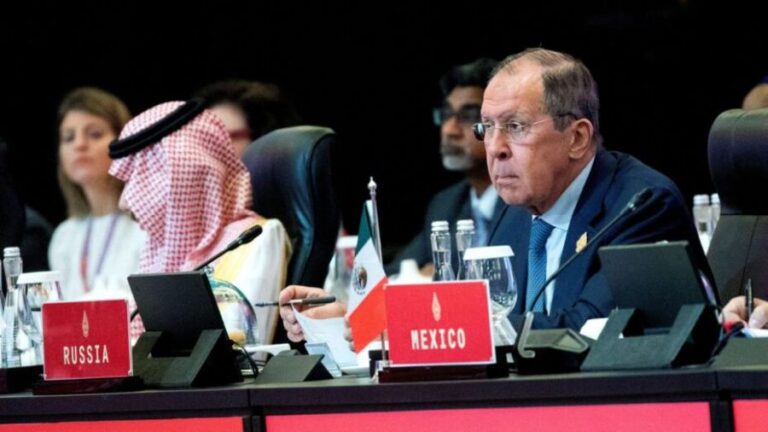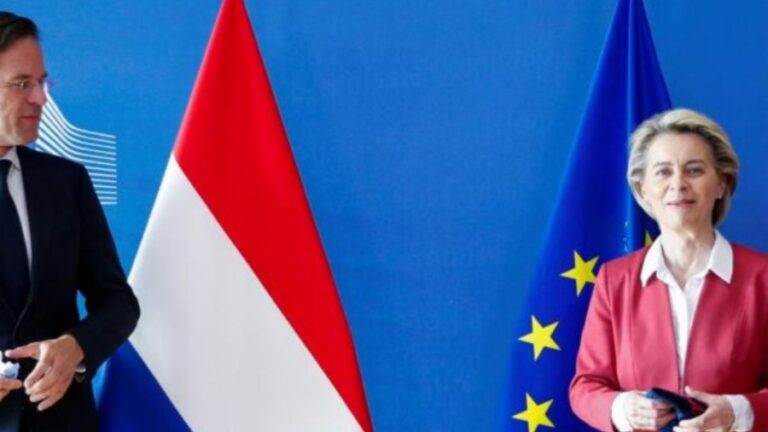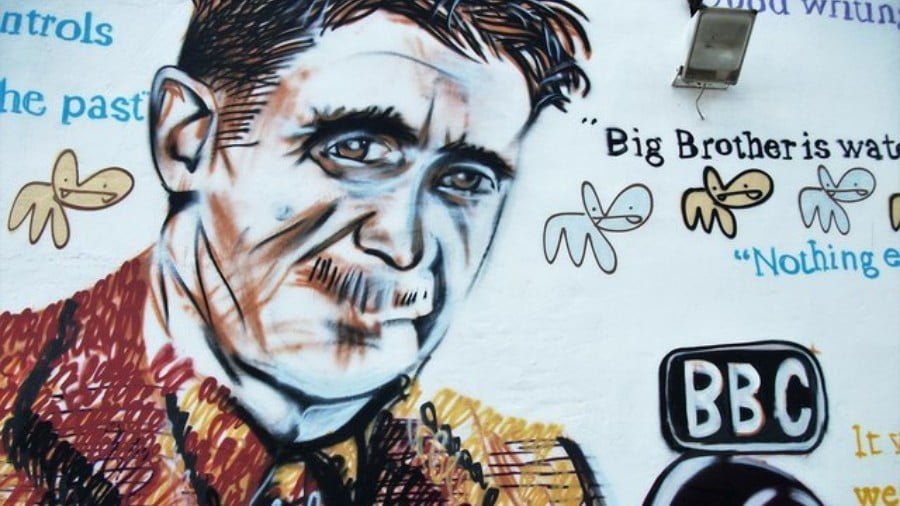Women’s Trafficking: A Dark Side of Globalization
According to the US data, for example, there were 600,000−800,000 men, women, and children trafficked in the world in 2005. Among them, there were 80% of women and girls. However, one of the problems is that the data does not take into account the traffic inside a country.[1] However, according to US Secretary of State, M. R. Pompeo in the Trump administration, at the end of the 20th century, there were 24 million people who lost their basic freedom and human dignity.[2]
Globalization one can define as “a process by which the people of the world are unified into a single society. This process is a combination of economic, technological, socio-cultural, and political forces.”[3] It is obvious that women’s trafficking is deeply related to globalization. Since the end of the Cold War, we can speak even about turbo-globalization.
The United Nations considers that “human trafficking is the acquisition of people by improper means such as force, fraud or deception, intending to exploit them. Human trafficking is a crime against humanity.”[4] Nowadays, 80% of the women and girls who are trafficked are also and sexually exploited.
In this article, I will try to explain the relation and the influence between globalization and women’s trafficking.
The purposes and ways of women’s trafficking
First of all, what are women’s trafficking exactly? The UN Protocol to Prevent, Suppress, and Punish Trafficking in Persons, especially Women and Children defines the key elements of trafficking in persons as:
- The act of recruitment, transportation, transfer, harboring, or receipt of persons.
- By means of the threat or use of force, coercion, abduction, fraud, deception, abuse of power or vulnerability, or giving payments or benefits to a person in control of the victim.
- For the purpose of exploitation, this includes exploiting the prostitution of others, sexual exploitation, forced labor, slavery or similar practices, and the removal of organs (Protocol Art. 3(a)).
- Consent of the victim is irrelevant where illicit means are established, but criminal law defenses are preserved (Protocol Art. 3(b), Convention Art. 11(6)).[5]
In the first half of the first decade of the 21 century, as a matter of example, there were between 480,000 and 660,000 women and girls trafficked each year across the borders throughout the world.[6] However, according to some studies, this number is underestimated by about 65%[7] and also does not take into account the trafficking inside the borders of a country. Most of the women who are transferred by force are from Asia and South/South-East Asia, then from East Europe, Latin America, the Caribbean, and Africa.[8]
The traffic of women is not only between different countries but it takes place also between some regions of the same country[9]. In Thailand, women from the country-side coming from ethnic minorities are sexually exploited in the scenic place of the country. We can observe that, in principle, the way of the traffic is going from the developing countries to the Western or industrially developed ones. The poorest countries of the world provide women or prostitutes most of the time to the richest countries. But this way of traffic is also valuable within some region. For example, in the Middle East, the prostitutes are from Iraq and they are “bought” in Syria. The fact is that the sex trade increases because of the industrialization of sex which is now a product, for which women and girls became only commodities. Today, this traffic generates billions of dollars[10] and is deeply linked with economic exploitation, sexual oppression, capital accumulation, international migration, unequal development, racism, and poverty.
We are confronted with different groups of actors involved in the business of women and girls trafficking that we can more or less define as:
- To the first group belong the organizers of such crime.
- The second group is the group of the victims: those women and girls.
- At the end of this network, we meet the customers of those “sexual goods”.
The Interpol defines organized crime as “any group having a corporate structure whose primary objective is to obtain money through illegal activities, often surviving on fear and corruption”[11] or by the UN as “the large-scale and complex criminal activity carried on by groups of persons, however loosely or tightly organized, for the enrichment of those participating and at the expense of the community and its members. It is frequently accomplished through ruthless disregard of any law, including offenses against the person, and frequently in connexion with political corruption.”[12]
Women’s trafficking as criminal activity
Criminal organizations work on two levels: legal and illegal. In appearance, an organization can be honest and quite “normal” as a shop or a construction company, and finally, it is just a way to hide the truth. Criminal organizations today earn one trillion and a half of the US dollars per year with a lot of illegal actions as corruption, all kinds of fraud and theft or burglary, traffic of women, drugs, guns, cars, and so on. There are some changes during the last decades concerning the work of those organizations. In the beginning, they have been all against each other. However, today, many loose criminal networks work together.[13] Besides, the criminal organization more and more use the internet which became a way to earn money, to rub, or to cheat the people. So, there is a direct link between legal and illegal markets as between the market of sex trafficking and international tourism. For example, today, when we talk about tourism in Thailand, one of the first thoughts is about sexual tourism. If the legal market supports the arcane market, it is really hard to fight against it even with law, police officers trained for it, and a good witness’s protection. We can conclude that organized crime groups are very adaptable to globalization.
Often the women who are trafficked were subject to rape or incest (it is the case of 75%−80% of the prostitutes), they are fragile persons, early educated to alcohol and drugs. They are also not attracted by the school or not well-educated; they are not motivated and performing in their jobs. Besides, those women have a complicated family life and for example, have to flee an undesired marriage.[14] In addition, those women are often from ethnic minorities or powerless groups of society,[15] which permit them to exploit women more easily. Those women are psychologically fragile and the criminal organizations play on the feelings and the weakness of them and more and more we can see a “personalized” tactic to recruit women. A part of this tactic is to build a friendship with the women. Thus, in the network of a trafficker, they chose their prey. Then, they create links, and finally, they exploit the person when she is confident.[16] Nevertheless, the economic situation of those women is the beginning of all the other drifts and this side of the problem is also linked with globalization.
The Non-governmental Organizations (the NGOs) which fight against women trafficking start with prevention and pre-emption to avoid that the women were traumatized, and having to “re-educate” them.
The clients, in general, are from Western countries as West Europe, the United States, Canada, or Australia. Those countries are high consumers of prostitution and sex trafficking. Some data can make a light on our mind: in Australia, each week, 60,000 men from the state of Victoria spend 7 million dollars buying prostitutes, and they spend nearly 360 million per year profiting from 4,500 women and girls. 18% of the German men use prostitutes and one million prostitute-users buy women each day for sexual activities. In the USA, estimations prove that half of the men’s adult population often “consumes” prostitution.[17] Thus, Westerners are the most important consumers of sexual “goods”. However, there are and other places in the world where women’s traffic is used as in India where they buy Bangladeshi women or in Syria where 50,000 Iraqi women were prostitutes before the outbreak of the current Syrian civil war. So, the richer countries are buying the women of the neighboring poorer countries.
Sometimes the women are kidnapped and they have not even the choice to leave their country. In the streets of the United Kingdom, a survey was saying that, for instance, 87% of the prostitutes (among a part of trafficked women) were victims of violence during the 12 last months, and 43% keep grave physical consequences.[18] An American study was showing that 78% of the prostitutes were abused and raped by their bosses or customers on average 49 times per year.[19] 49% of those women have been transported from one state to another one and 27% have been mutilated. The drug is used by the pimps to neutralize the women and make them dependant. It is the same situation with alcohol but it is less useful than drugs for the women’s victims of traffic.
When we talk about health we speak about the disease like AIDS or HIV. For example, in Burkina Faso, 58% of the prostitutes have AIDS, 52% in Kenya, 50% in Cambodia, and 34% in North Thailand. A woman after one or two years in prostitution is suffering from post-traumatic stress syndrome (the PTSS) conditions that are associating with war’s trauma[20]. Prostitutes, as well, have more easily a heart attack because of their life. However, prostitution appears more and more “normal” and in Europe, even some countries legalized it (like the Netherlands). It now became a legal market that is why the situation is more and more confused for one side of the story because of globalization.
Globalization multiplies the means of transport and communication. Thus, it is normal to use a plane to go somewhere at a really low cost or to organize a meeting on the internet. In this way, it is easier for organized crime to develop their business as a legal one. They are faster and can traffic in bigger proportions. The porous borders are also another argument that permitted women to traffic to increase.[21] The borders are more and more porous thanks to economic agreements as the European Union (the Schengen Zone), the Mercosur (Mercado Comùn del Sur), the COMESA (Common Market of Eastern and Southern Africa), the ASEAN (Association of South-East Asian Nations) or the NAFTA (North American Free Trade Agreement). Those agreements permit migration for work or simply easier migration as between the EU countries, but it is also a door for other traffics despite the controls which is in many cases very corrupted. Globally, those agreements helped the smugglers to cross the borders with the girls and women.
“Sex Tourism” and women’s trafficking
The following phenomenon is the so-called “sex tourism”. For instance, each year, there are 5,1 million sexual tourists who are increasing the demand for prostitutes. In South-East Asia we meet one of the biggest rates of human being trafficking: 400,000 women and children per year.
Before the boom of “sex tourism”, the first reason for prostitute implantation was the presence of soldiers. For example, in Thailand during the Vietnam War, there was an augmentation of the number of prostitutes, just for the soldiers. That is why Jean Enriquez in her discourse pointed out that the militarization of our world increase also the phenomenon of prostitution and sex trafficking.[22] There were 18.000 South Korean women and girls to the U.S army of 43,000 soldiers in the territory disposition.[23] Today, we can remark that in South Korea where there is the U.S army you can remark prostitutes and girls from Philippine (nearly 5.000), Russia, etc. around the military bases.[24] There is also a change in the demand for younger and younger women and more and more “exotic” women which create new victims as the indigenous. So, the presence of an army, the presence of war, or simply the militarization of the world favor and create demands for prostitution. But what we could see is the fact that women are weakened by globalization.
In our world we are confronted with patriarchate, women are rape, aggressed, and abused sexually. Through globalization, we are confronted with the same problem. The patriarchate is added to the globalization. Thus, the women are weakened in the North as in the South. They are disadvantaged economically, politically, and socially. We can say that globalization is worst for women than for men and it is worst in the South than in the North.
After the dissolution of the USSR followed by the end of the Cold War, we could see that millions of women were fired or just have temporary jobs for three or six months, thus they have precarious jobs. They feel the risk all the time to be poorer. They are confronted with other problems as expulsion from their lands which are converted into commercial cultures. Finally, we see that globalization permits the augmentation of the women’s traffic and even its boom with the USSR collapse. The augmentation thus has different reasons: economic, political, cultural changes, the militarism of our societies, and the inequalities prompted by globalization.
However, on the other side, globalization favors also and a better way to fight against women trafficking as the international community on the global level is trying to find out solutions by different means. Now we will try to figure out how the international community tries to end women’s and girls’ trafficking.
How to fight against women’s trafficking?
The principal global organization and the most powerful fighting institution against human trafficking is the United Nations. The UN fights through protocols that permit collaboration between numerous states. In 1993, the UN takes a real engagement against women trafficking, defining legally what it is, and taking resolutions against it. But in 2000 with the augmentation of the phenomenon, the ratified a new protocol: the UN Optional Protocol to Prevent, Suppress and Punish the Trafficking in Persons, Especially Women and Children. This protocol was attached in 2003 with the Convention Against Transnational Organized Crime.[25] The UN delegates power to the United Nations Office on Drugs and Crimes and its Commission on Crime Prevention and Criminal Justice. Both organizations have a specific role. The first one is more helping the people in their country but also creating a prevention campaign, while the second one is more advising the (developing) countries about law and what they can provide as security in their country. Therefore, they are completing each other: the first is practical, whereas the second is more juridical.[26]
Nonetheless, the UN is not the only organization preoccupied with the problem. There are a lot of NGO’s like Amnesty International or Anti-Trafficking Alliance. However, the CATW and the GAATW (Global Alliance Against Trafficking Women) remain the two main ones. Those groups lead a huge work of lobbying and pressure on the UN and governments of some countries. They have also a consultative role. The CATW as the GAATW regroups several organizations all over the world. They are as an umbrella to protect them but also to pass their ideas. In addition, there are NGO’s all over the world and they have to follow the law of the countries. The fact that there is an adequate law is not the symbol of a developed country and vice-versa. For instance, the United Kingdom does not have any rules against women trafficking.
The fight against traffic can also be fruitful by making the regional agreements between the UNECE[27] (the United Nation Economic Commission for Europe), the European Union, the OSCE (the Organization for Security and Co-operation in Europe), the IOM (the International Office of Migration) or the ILO (the International Labor Organization). International treaties can play a positive role in this way with the establishment of communitarian policies and information registers.
To fight against women trafficking there are a lot of means which are increasing thanks to the new technologies. For instance, communication means are composed of newspapers, TV, radio, advertising, and the internet. Those means permit propaganda and aware the people about what happened and how it runs. A good example is that on TV was created the soap-opera Matrioshki[28] by a Belgium director. This was the story of 10 Lithuanian women trafficked to West Europe. This soap-opera was used in East Europe to prevent women’s trafficking. Another means are manifestations, conferences, and meetings which permit a lot of people, in different places to move and to try to fight. The countries and the UN use law and rights. One of the problems is that all countries do not ratify the UN conventions and also even do not have any law against trafficking. The other problem is that some countries legalized prostitution. That means that, unfortunately, there is not homogeneous politics against the trafficking of men, women, and children.
Endnotes:
[1] Data from the U.S Department of State: http://www.state.gov/g/tip/rls/tiprpt/2005/46606.htm
[2]Trafficking in Persons Report, Department of State, United States of America, June 2019.
[3] Sheila L. Croucher, Globalization and Belonging: The Politics of Identity in a Changing World, Rowman & Littlefield, 2004, p.10.
[4] https://www.unodc.org/unodc/en/human-trafficking/index.html
[5] https://www.unodc.org/documents/human-trafficking/ecowas_training_manual_2006.pdf
[6] Data from the U.S Department of State: http://www.state.gov/g/tip/rls/tiprpt/2005/46606.htm
[7] http://www.ifad.org/media/events/2007/women.htm
[8] “Globalization and the Sex Trade: Trafficking and the Commodification of Women and Children”, Canadian Women Studies/Les cahiers de la femme, Vol. 22, No. 3−4, December 2003, p. 41.
[9] Ibid., p. 38.
[10] Ibid.
[11] Paul Nesbitt, Head of Organized Crime Group, quotation from Bresler, 1993, p. 319.
[12] The United Nations, August 1975.
[13] http://www.unodc.org/unodc/en/organized-crime/index.html
[14] Marek Okolski, “Trafficking in Women in the Baltic States: Sociological Module” in Trafficking in Women and Prostitution in the Baltic States: Social and Legal Aspects, International Organisation of Migration, 2001.
[15] Richard Poulin, “Globalization and the Sex Trade: Trafficking and the Commodification of Women and Children”, Canadian Women Studies/Les cahiers de la femme, Vol. 22, No. 3−4, December 2003, p. 40.
[16] Marek Okolski, “Trafficking in Women in the Baltic States: Sociological Module” in Trafficking in Women and Prostitution in the Baltic States: Social and Legal Aspects, International Organisation of Migration, 2001.
[17] Jean Enriquez, “Globalization, Militarism, and Sex trafficking”, communication at the International Meeting of the Women World March, Lima Peru, July 2006.
[18] Richard Poulin, “Globalization and the Sex Trade: Trafficking and the Commodification of Women and Children”, Canadian Women Studies/Les cahiers de la femme, Vol. 22, No. 3−4, December 2003, p. 40.
[19] Ibid.
[20] Jean Enriquez, “Globalization, Militarism, and Sex trafficking”, communication at the International Meeting of the Women World March, Lima Peru, July 2006, p. 3.
[21] Ibid.
[22] Ibid.
[23] Ibid.
[24] Ibid.
[25] http://www.unodc.org/unodc/en/treaties/index.html
[26] http://www.unodc.org/unodc/en/commissions/index.html
[27] http://www.unece.org/ oes/ gender/ documents/ Secretariat%20Notes/ ECE_AC.28_2004_10.pdf – 103k – 03/Jan/2008
[28] http://en.wikipedia.org/wiki/Matroesjka%27s







